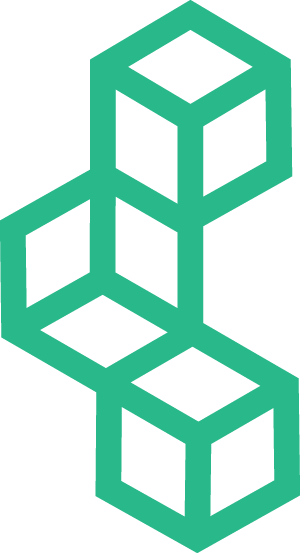Which Tech Trends will transform Facility Capital Planning in 2023?
Digital transformation dominated the Facilities Management sector in 2022. As a result, technology and information management play an increasingly important role in facility planning. Accordingly, the newest trends in facility planning echo these shifts.
Here we discuss the most exciting tech trends transforming Facility Capital Planning in 2023.
1. Sustainability, Green Building, and Facility Capital Planning
Climate change has become one of the most significant concerns of our time, especially for those who manage facilities, physical assets, and infrastructure. Designing genuinely sustainable and resilient buildings means considering the potential side effects of climate change.
Scientists and economists now predict climate change will increasingly increase the frequency of extreme weather events such as cyclones, floods, heat waves, high winds, and winter storms. All of which negatively impact the structural integrity of buildings and infrastructure. Protecting against future natural disasters and scheduling and carrying out repairs related to weather damage present a significant challenge for facility managers and capital planning executives.
Read more about how Facilities Managers are preparing for climate change.
Therefore, we predict green building technology will become increasingly trending in facility capital planning. Green building technology uses advanced technologies to develop buildings with minimal environmental impact throughout all lifecycle stages: from design, construction, operation, maintenance, and renovation, to demolition.
Due to its myriad benefits, facility managers and capital planners are increasingly embracing green building technology, which delivers more efficient buildings, construction, and operation costs.
Central to green building technology is efficiency: from energy to materials to water, operations, maintenance optimization, through to waste and toxic reduction.
The overall goal of green buildings is to reduce the adverse effects of buildings on the environment, including the emission of carbon dioxide and other toxic gases and the depletion of natural resources through irresponsible harvesting of construction materials.
You can learn more about how smart facility managers use Green Building Technology.
2. BIM for Facility Managers
This is one of the top tech tools on our radar for 2023. BIM offers a vast opportunity to improve collaboration and communication for facility managers.
Traditionally used by contractors and architects, Building Information Modeling (BIM) is a tool for developing and scaling virtual models of building projects. While BIM is not a new technology, it is increasingly becoming commonplace in the facility management sector.
BIM offers Facility Managers a complete visual model of facilities, assets, and infrastructure. Facility professionals harness these tools' power for project management, delivery, and data accessibility. When integrated with existing work order programs or facility maintenance software, facility teams realize an improved ability to retrieve accurate asset information and insights.
3. Artificial Intelligence speaks to the Built Environment
Artificial Intelligence technologies are making a significant impact on society and the facilities management industry. It is now even more possible for FMs to leverage AI capabilities to increase contributions to revenue and efficiency in facilities management and capital planning.
Using AI to monitor physical assets and gather intelligence makes it easier to predict the performance lifecycle for an asset before its performance is affected or before the asset fails. This can help facility management teams perform preventive maintenance more effectively and address potential issues before they become problems.
Read more about the disruptive technology trends empowering the facilities management ecosystem.
AI has the potential to increase the power and agility of buildings. By leveraging the collected data from meters, utilities, BMSs, sensors, and connected equipment—to automatically respond to changing conditions in the weather, occupancy, and equipment performance so that owners and operators of buildings can optimize energy savings and increase comfort.
In addition, AI enables facilities to become more responsive to the rapidly changing demands of tenants, such as sustainability goals, comfort requests, office layouts, and technology-driven amenities.
You can learn more about successfully implementing Artificial technology for Facility Capital Planning.
4. Drones improve Facility Condition Assessments
Drone technology is rapidly advancing. It is becoming more efficient and less expensive. For example, imagine performing roof inspections without wasting time or money on scaffolding—this is one of the significant benefits that drones offer owners and operators of facilities and infrastructure.
We predict that buildings, infrastructure owners, and operators will begin integrating drones for aerial surveillance of buildings and outdoor spaces in the coming years. This will allow security personnel to monitor large areas more effectively.
Discover exciting developments in Smart City Technology.
While commercial-use drone technology is still emerging, and many safety considerations must be sorted, there have been successful examples of drones surveying historical sites in NYC. This denotes a promising future for using drones to perform detailed condition assessments.
Drones will bring unprecedented opportunities for improved efficiency in facility management. One of the most significant benefits of implementing drones during facility condition assessments is the increased safety and automation offered. While drone use may be limited across the industry in 2023, we expect a surge in popularity from CRE executives in the years to come.
5. Facility Optimization with Machine Learning and IoT
Facility Optimization has evolved far beyond simply managing energy consumption as a tactic to improve the bottom line. Instead, it has been revolutionized by innovative tech and software platforms focusing on enhanced asset performance, connected buildings, and preventive maintenance management.
Internet-connected devices generate datasets for buildings that have never existed – and can now be leveraged through machine learning. Building owners, managers, and engineers will use machine learning to sift through data and unlock insights into market trends, building performance optimization, and other big-data applications.
The benefits of automation are boundless. For example, rather than relying on tenants or facility team members to constantly monitor temperature levels, the influx of work orders, or switching off the lights, a centralized Building Automation System (BAS) will seamlessly and automatically monitor these essential functions.
Furthermore, because these systems continually collect data, you can optimize your physical assets based on real-time insights. This gives your facilities management team the ability to analyze usage patterns, which in turn gives you the power to develop strategies for saving money and improving efficiency throughout your entire asset portfolio.
For 2023, we predict that the Facility Capital Planning and Management industry will spend significantly less time manually collecting data and more time moving toward optimization goals with the help of IoT, Building Automation, and Machine Learning.
6. Digital twins and data visualization reshape architecture, engineering, and construction
A Digital Twin is a virtual model that is an exact copy (twin) of a physical object or system representing its entire lifecycle. For example, this could be a building, HVAC system, bridge, transit system, etc...
Connected sensors monitor the physical asset, collect data, and map it directly onto the virtual model. This allows facility managers and capital planners to view real-time information about the physical thing.
A digital twin uses data from connected sensors to demonstrate how an asset will perform through its entire useful lifecycle. With data from the Internet of Things (IoT), measuring specific asset health and performance indicators, such as temperature and humidity, is possible.
You can learn more about the role of digital twins and data visualization in reshaping architecture, engineering, and construction.
Digital Twins make it possible to make facility operations more efficient because all maintenance is documented in a digital ledger. In addition, with digital twins, it is more accessible to aggregate data from multiple sources to create a single source for data analysis. This means facility managers can monitor the maintenance of physical assets and predict material and labor cycles, which reduces waste and enhances efficiency.
As digital twins gain momentum in Architecture, Engineering, and Construction (AEC), building operators and owners can strategize the long-range planning of the performance of assets. In the future, digital twins could become the foundation for the urban environment to be more resilient in the face of global challenges.
7. Blockchain Buzz
Recently, there has been much buzz about the benefits of Blockchain for the facilities management sector. As a result, Blockchain, a ledger technology used to track activities and actions within a system, is becoming a more critical part of the technology used in facilities management.
According to the Professional Retail Store Maintenance Association (PRSM), Blockchain can revolutionize contract management, work order processing, payment processing, tracking of facilities management and maintenance needs, and increase overall facility transparency.
Data stored in a Blockchain has the potential to be quickly and easily reviewed, even when maintained by separate departments. This is because it provides a fast and accurate data analysis. Further, highly confidential or proprietary data is far more secure because of Blockchain's single source of shared truth.
An advantage of Blockchain is that it will streamline processes and lower costs by reducing and eliminating those dreaded manual operations. This could be adapted to almost any function, including preventive maintenance, work orders, environmental health and safety planning, and space management.
While the widespread implementation of Blockchain is still a long way off, it is still a good idea to invest time and energy into evaluating and researching how this exciting new technology could be implemented. At Intellis, it is always early enough to start identifying areas where recent technological developments can improve.
Intellis Looks Ahead...
Facility planning connects those working in the industry and those impacted. These facility management trends demonstrate that employers and service providers are transitioning from transactional to experiential.
These technologies are transforming the facility management industry significantly, and it will be exciting to see how these will grow. However, digital transformation is an unfolding revolution regarding improvements in physical assets' quality, production, and longevity.
The FOUNDATION software platform is part of this revolution, and these exciting new developments will change the facility management industry. With FOUNDATION, you will be well-equipped to be at the forefront of this wave of digital transformation.
Software solutions such as FOUNDATION help businesses organize better their facility management departments, which leads to less unplanned downtime, higher productivity, and better overall business performance. For example, when facility managers move from organizing inspection and maintenance with paper, pen, and clipboards to implementing software solutions such as FOUNDATION, customers can reduce costs by seven to nine times.
At Intellis, we keep a sharp eye on technological developments that redefine the future of Facilities Planning. Our mission is to harness the latest advancements with our mobile enterprise solutions, such as FOUNDATION, to provide our clients with the best software solutions to ensure healthy buildings and infrastructure while reducing costs, improving productivity, and boosting sustainability.
Talk to us directly to learn more!


